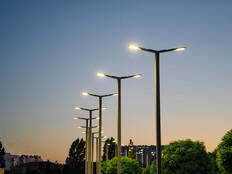The next generation of Wi-Fi is on the horizon. It’s designed for the type of high-density environments found in large office buildings or government complexes, which can put on a strain on networks. Here’s what to know.
1. What Is Wi-Fi 6?
The goal is to boost performance in densely populated areas — when both clients and access points play by Wi-Fi 6 rules. Each new Wi-Fi number builds on the one before: Wi-Fi 6 (based on IEEE 802.11ax) focuses on environments such as corporate campuses and stadiums. Wi-Fi 5, the IEEE 802.11ac standard, is now widely deployed and should coexist well as Wi-Fi 6 debuts.
2. When Can My Agency Get Acces to Wi-Fi 6?
The standard still isn’t fully approved, but every major Wi-Fi infrastructure vendor has already announced products. On the client side, the Samsung’s Galaxy S10 cellphone and Apple’s iPhone 1 family of devices are the first to support it.
3. What Kind of Benefits Does Wi-Fi 6 Bring?
Older devices should work fine on Wi-Fi 6 networks, but without new clients, there is no advantage. The biggest jump will be in high-density spaces, but these features require both clients and access points to be Wi-Fi 6. Wi-Fi 6 does require the new WPA3 encryption and authentication protocol, which gives stronger security.
4. What Solutions Support Wi-Fi 6?
A full Wi-Fi 6 deployment means changing access points, clients and infrastructure. That’s a big step. Instead, IT managers should look for a gradual upgrade path, making sure anything added now can support Wi-Fi 6.
5. How Does Wi-Fi 6 Relate to 5G?
Wi-Fi 6’s speed and density extend the usefulness of Wi-Fi as a better alternative to cellular data (even superfast 5G). That said, the two are complementary: Wi-Fi 6 is ideal indoors and 5G is the standard outdoors.











